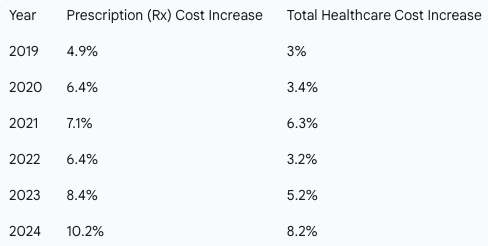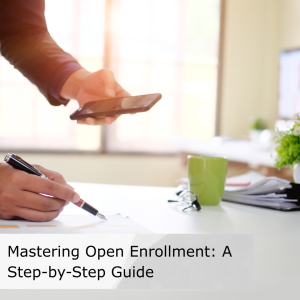
by admin | Dec 9, 2025 | Custom Content, Health & Wellness
 The transition into winter and the busy holiday season often brings two things: cold weather and packed calendars. While the shorter days and festive cheer are welcome, they also present unique challenges to our health, including managing stress, fighting off seasonal illnesses, and maintaining an active routine.
The transition into winter and the busy holiday season often brings two things: cold weather and packed calendars. While the shorter days and festive cheer are welcome, they also present unique challenges to our health, including managing stress, fighting off seasonal illnesses, and maintaining an active routine.
Staying healthy this winter isn’t about grand gestures; it’s about small, consistent habits that protect your body and mind. Here is your guide to winter wellness.
- Boost Your Immune System and Sleep
The fight against winter colds and the flu starts with strengthening your natural defenses. This season, prioritize three foundational pillars of immunity:
Mind Your Vitamin D
With less sunlight exposure, many people become deficient in Vitamin D, which is crucial for immune function and mood regulation. If you can’t get 10–15 minutes of midday sun exposure, consider speaking to your doctor about a supplement. This small adjustment can make a big difference in fighting off sickness.
Stay Hydrated (Yes, Even in Winter)
The dry winter air and indoor heating dehydrate us faster than we realize, weakening the protective mucous membranes that fight germs. Keep a water bottle within reach and aim to drink herbal tea or warm water throughout the day. Dehydration contributes to fatigue, which makes you more susceptible to illness.
Make Sleep Non-Negotiable
Sleep is your body’s most effective time for immune repair. With holiday parties and deadlines looming, it’s easy to sacrifice an hour of sleep, but this can significantly compromise your health. Aim for 7-9 hours of quality sleep nightly. Stick to a consistent bedtime, even on weekends, to regulate your body’s natural rhythms.
- Managing Holiday Stress and Mental Load
The holidays bring a mix of joy and unique pressures—financial strain, travel headaches, and social commitments. Protect your mental health by applying these strategies:
Practice Proactive Planning
Instead of letting tasks pile up, dedicate 15 minutes each Sunday evening to look at your calendar and budget your energy. Schedule time blocks not just for work meetings, but also for “recharge time” and “boundary setting.”
Set Realistic Boundaries
It’s okay to say no to extra commitments. Whether it’s an optional holiday event or taking on another project before year-end, know your limits. Communicate clearly and politely: “That sounds lovely, but I can’t commit right now.” Protecting your time is vital for preventing burnout.
Embrace Micro-Mindfulness
Use small moments throughout the workday to check in with yourself. Before answering an email or joining a meeting, take two deep, slow breaths. This simple action can lower your heart rate, reduce the stress hormone cortisol, and reset your focus.
- Keep Moving, Inside and Out
When it’s cold and dark, the couch can be a powerful magnet. Counter this by adapting your fitness routine to the season:
Take a “Walking Meeting”
If you are working from home or have an internal call, suggest a walking meeting outside. Even 15 minutes of brisk outdoor walking can boost your mood and provide light exposure to aid Vitamin D production. Remember to layer up!
Find Your Indoor Outlet
Don’t rely solely on outdoor activities. Explore simple indoor options: use resistance bands while watching TV, follow a 15-minute yoga session online, or simply do some stretching and bodyweight exercises before starting your workday. The goal is consistency, not intensity.
Fuel with Focus
The holidays often mean sugary treats, which can lead to energy crashes and sluggishness. Balance celebratory foods with nutrient-dense options. Focus on protein, fiber, and healthy fats to keep your energy stable, especially during peak work hours.
By taking small steps each day – and listening to your body – you can enjoy the winter season, stay healthy, and start the new year feeling your best.

by admin | Nov 24, 2025 | Custom Content, Health & Wellness
 The phrase “attitude of gratitude” is more than a simple rhyme—it’s a powerful reminder to intentionally practice thankfulness in our daily lives. Consistently acknowledging what we appreciate not only enhances our own mental and physical health but also positively affects those around us.
The phrase “attitude of gratitude” is more than a simple rhyme—it’s a powerful reminder to intentionally practice thankfulness in our daily lives. Consistently acknowledging what we appreciate not only enhances our own mental and physical health but also positively affects those around us.
What Is Gratitude?
Gratitude means being thankful and ready to show appreciation and return kindness. While saying “thank you” is a common expression of gratitude, it also includes reflecting on positive moments from your day or life and genuinely feeling grateful.
The Profound Health Benefits
The benefits of gratitude extend far beyond simply making someone feel appreciated. Research has consistently demonstrated measurable psychological and physiological advantages for those who practice it regularly.
Mental and Emotional Well-being
Consciously practicing gratitude has been proven to act as a direct counter to stress and anxiety.
- Increased Happiness: Studies show that a single, thoughtful act of gratitude can produce an immediate increase in happiness and a 35% reduction in depressive symptoms.
- Improved Outlook: It fosters greater optimism for the future, improved mental well-being, and greater overall satisfaction with life.
- Reduced Toxic Emotions: Gratitude helps diminish feelings of envy, frustration, resentment, and regret.
- Character Development: It encourages the development of valuable traits like patience, humility, and wisdom.
Physical Health Advantages
The positive effects of gratitude are so deep that they manifest physically:
- Better Health Outcomes: Individuals who focus on gratitude have even reported fewer visits to the doctor.
- Improved Rest: It is linked to better sleep quality and less fatigue.
- Cellular Resilience: Perhaps the most surprising benefit is its effect on the body’s internal state. Regular gratitude is associated with lower levels of cellular inflammation. Since chronic inflammation is a root cause for numerous diseases, this suggests that thankfulness plays a role in long-term disease prevention and better physical health overall.
Simple Ways to Cultivate Gratitude
Building a habit of thankfulness is easy and requires minimal time. Here are practical exercises to strengthen your gratitude muscles every day:
- Daily Acknowledgment: Make it a point to sincerely say “thank you” to people throughout your day.
- Journaling: Keep a dedicated gratitude journal or use a physical gratitude jar to record specific things you are thankful for each day.
- Handwritten Notes: Take the time to write personalized, handwritten thank-you notes.
- Mindful Reflection: Set aside a few minutes daily to think or meditate on positive events.
- Create Rituals: Incorporate thankfulness into a daily routine, such as sharing a high point of the day at the dinner table.
- Visual Reminders: Use sticky notes around your home or workspace to prompt you to pause and appreciate what you have.
The evidence is clear: cultivating an “attitude of gratitude” is not a luxury, but a necessity for optimal health. By committing to mindful reflection and simple daily practices—whether through journaling, enjoying time spent with a loved one, or simply saying thank you—you invest directly in your psychological resilience and physical longevity. Start today to experience the transformative power of thankfulness.

by admin | Nov 4, 2025 | Custom Content, Employee Benefits, Health & Wellness
 The future of healthcare is rapidly evolving, with a clear trend toward integrating health interventions directly into employee benefits packages. As employers face rising healthcare costs—projected to increase by over 8% in 2025—they are rethinking how to deliver value to their workforce while managing expenses. This integration is reshaping not just what benefits are offered, but how employees access, use, and experience healthcare.
The future of healthcare is rapidly evolving, with a clear trend toward integrating health interventions directly into employee benefits packages. As employers face rising healthcare costs—projected to increase by over 8% in 2025—they are rethinking how to deliver value to their workforce while managing expenses. This integration is reshaping not just what benefits are offered, but how employees access, use, and experience healthcare.
From Reactive to Proactive: A Paradigm Shift
Historically, employee benefits have largely been reactive, focusing on covering costs after an illness or injury occurs. While essential, this model often overlooks the power of prevention, early intervention, and continuous support. The modern workforce, increasingly diverse in its needs and health goals, demands more. They seek benefits that empower them to manage their health proactively, rather than merely responding to sickness.
Integrating health interventions directly into benefits packages represents a pivotal move towards a proactive, holistic model. This means weaving in tools and programs that actively promote wellness, manage chronic conditions, and address the root causes of health challenges before they escalate.
What Do “Integrated Health Interventions” Look Like?
This new era of benefits goes beyond basic wellness programs. It encompasses a wide array of specialized, often technology-driven, interventions designed to meet specific health needs:
- Personalized Digital Health Platforms: These platforms leverage AI and data to offer tailored recommendations for fitness, nutrition, sleep, and stress management. They can connect employees with virtual coaching, mental health resources, and even provide smart device integration for continuous health monitoring.
- Specialized Chronic Condition Management Programs: For employees managing conditions like diabetes, hypertension, or asthma, integrated benefits offer dedicated support. This might include virtual health coaching, remote monitoring devices, personalized nutrition plans, and direct access to specialists, all aimed at improving adherence, outcomes, and quality of life.
- Mental Health & Well-Being Solutions: Recognizing the escalating importance of mental health, benefits packages are increasingly including access to online therapy platforms, meditation apps, stress reduction programs, and resilience training. These are often integrated with EAPs (Employee Assistance Programs) for a comprehensive support system.
- Preventive Care & Early Detection Initiatives: Beyond standard physicals, this could involve access to advanced health screenings, genetic testing (with proper counseling), smoking cessation programs, and vaccination clinics, all designed to identify risks early and prevent disease.
- Family-Building & Parental Support: Expanding beyond traditional maternity benefits, interventions now include fertility support, adoption assistance, lactation consulting, and comprehensive parental leave policies, acknowledging the full spectrum of family health needs.
The Multi-Layered Benefits of Integration
For employers, the strategic integration of health interventions yields substantial advantages:
- Improved Employee Health Outcomes: Proactive management leads to healthier employees, reducing the incidence and severity of chronic conditions.
- Reduced Healthcare Costs: Early intervention and better management of health issues can significantly lower claims costs, emergency room visits, and long-term medical expenses.
- Enhanced Talent Attraction & Retention: A comprehensive, forward-thinking benefits package is a powerful differentiator in a competitive job market, signaling a true investment in employee well-being.
- Increased Productivity & Engagement: Healthier, less stressed employees are more focused, engaged, and productive, leading to a more vibrant workplace culture.
- Stronger Organizational Culture: Prioritizing employee health fosters a culture of care, support, and appreciation, boosting morale and loyalty.
Challenges and the Path Forward
While the benefits are compelling, integration comes with its challenges, including data privacy concerns, ensuring equitable access, and effectively communicating complex offerings. The future of healthcare within employee benefits is not just about providing access to care, but about actively cultivating health. By seamlessly weaving targeted health interventions into benefits strategies, organizations can build a healthier, more resilient workforce, ultimately contributing to a more sustainable and prosperous business.

by admin | Oct 30, 2025 | Custom Content, Employee Benefits, Health Care Costs
 No doubt about it, prescriptions are expensive. While this may not be a big worry when you’re young and healthy, the costs can add up quickly if you’re diagnosed with a chronic condition or need an expensive drug. Whether you take medications regularly or for an occasional illness, it pays to know how to save money on prescriptions.
No doubt about it, prescriptions are expensive. While this may not be a big worry when you’re young and healthy, the costs can add up quickly if you’re diagnosed with a chronic condition or need an expensive drug. Whether you take medications regularly or for an occasional illness, it pays to know how to save money on prescriptions.
Did You Know?
Drug costs are a primary driver of rising healthcare expenses for both employers and employees. Prescription drug spending is consistently growing at a faster rate than overall healthcare costs, with a steady increase of 6.8%. As the fastest-growing part of benefits plans, these costs will continue to climb with new pharmaceutical innovations.
For years in the U.S., cost has been a significant obstacle to sticking with medications with up to 3 in 10 people reporting that they do not take their medications as prescribed.
The Rising Cost of Prescriptions
Historically, prescription drug costs have outpaced total healthcare costs. The following chart highlights this trend from 2019 to 2024. 
Prescription drug costs can put a strain on your budget, but with a little research and the right questions, you can reduce expenses without sacrificing your health.
Here are expert-backed strategies to help you save on your medications:
-
-
- Ask About a Generic Drug – Get the same quality and active ingredient as you’d find in a brand name, for less money.
- Save Money with a Pill Splitter – If your prescription comes in a higher dose that can be safely split, you get 2 doses for the price of 1.
- Consider a Combo Pill – Combining two drugs into one pill can help you avoid paying separate copays or coinsurance. Ask if a combo pill is an option for you.
- Buy in Bulk – Opt for a mail-order pharmacy to get a 90-day supply of your meds instead or a 30-day supply. This can often reduce your copay and overall cost.
- Make a List and Check it Twice – Check the list of preferred medications (a.k.a. “the formulary”), which tend to cost less.
- Find Out if You Still Need That Medication – If you’ve been taking the same medication for years, it’s worth checking in with your doctor to see if you still need it. Or if you’ve made a lifestyle change, it may reduce your need for certain medications. It never hurts to ask your doctor.
-
-
-
-
-
The medicines prescribed by your doctor are essential to your good health. With some savvy shopping, you can use the money you save on the things you enjoy!
by admin | Oct 7, 2025 | Custom Content, Employee Benefits
Health Insurance today is significantly more complex for young workers than it was just a decade ago. This complexity is driven in large part by healthcare costs that have outpaced inflation, pushing premiums, copays, and other out-of-pocket expenses to comprise substantial portions of their budgets. For many younger employees, navigating this landscape is confusing – more than 50% of Gen Z and Millennial workers admit to randomly selecting a health insurance plan, and nearly half say they don’t know where to turn for help during open enrollment. This lack of guidance makes it difficult for them to anticipate costs and make informed decisions about their care.
They also don’t truly grasp basic health insurance terms like “premium” or “deductible.” This knowledge gap doesn’t just confuse employees; it costs businesses an estimated $106 billion to $238 billion annually due to poor health literacy.
The good news? We can turn the tide. Empowering employees to become smarter benefits consumers pays off for everyone, leading to better health outcomes and lower costs. The earlier this education begins, the greater the impact. Here are five practical strategies for helping young employees get up to speed on their benefits:
- Begin with the Basics – Assume nothing. Most employees, particularly those just starting out, aren’t familiar with insurance jargon. Start with “Benefits 101” initiatives that cover the absolute basics: common terms, the ins and outs of group health coverage, vesting schedules, and enrollment period restrictions. Laying this groundwork early helps ensure young employees can make the most of their benefits from day one.
- Highlight the Personal Value – Young employees want to know, “What’s in it for me?” Beyond basic definitions, highlight how a deeper understanding can translate into real-world savings. Explain provider networks and demonstrate how a little research can save thousands on medical procedures.
- Mix Up the Messaging – Traditional handouts are helpful, but young employees often engage more with dynamic content. Use a variety of formats—emails, videos, infographics, flyers, posters, and interactive presentations—to make benefits education more appealing and memorable. A diverse approach ensures the message reaches everyone.
- Make Education Ongoing – Benefits education shouldn’t be a one-time event. Start as soon as employees are hired and keep the conversation going year-round. Regularly discuss relevant topics, such as how to handle life events, use telemedicine, fill prescriptions, or choose between urgent care and the ER. Consider implementing a consistent communication schedule, tackling different benefits topics each month to keep knowledge fresh, especially as open enrollment approaches.
- Offer Personalized Support – Even with great resources, some employees will still have questions. Designate an HR team member as the go-to benefits expert, available for email, virtual, or in-person support. Encourage all employees to meet with HR at least once before open enrollment and consider one-on-one sessions to address individual concerns.
It’s up to employers to help their teams understand and use their benefits wisely—especially young employees who can’t be expected to make informed decisions without a solid grasp of the basics. The real-life reasons people give for delaying or avoiding care—or choosing an ER visit over a primary care doctor—are a powerful testament to why this education is so critical. By investing in benefits education, employers set everyone up for better health, financial security, and peace of mind.

by admin | Sep 30, 2025 | Custom Content, Employee Benefits
 Open enrollment doesn’t have to be a stressful administrative task. When planned well in advance, it becomes a valuable opportunity to review and enhance your benefits offerings, demonstrating your commitment to your team’s physical, mental, and financial well-being. A well-executed open enrollment can boost employee morale, improve retention, and ensure your workforce is supported.
Open enrollment doesn’t have to be a stressful administrative task. When planned well in advance, it becomes a valuable opportunity to review and enhance your benefits offerings, demonstrating your commitment to your team’s physical, mental, and financial well-being. A well-executed open enrollment can boost employee morale, improve retention, and ensure your workforce is supported.
Use this checklist to guide your organization through a successful open enrollment period, from the initial planning stages to the final follow-up.
Phase 1: Plan and Prepare Early (8-12 Weeks Before)
- Leverage technology: Consider a benefits portal where employees can easily access health plan documents such as benefit summaries, plan flyers, and contributions charts.
- Gather Employee Feedback: Solicit and record employee questions, concerns, and suggestions from the previous year. Consider conducting a survey to understand what benefits or improvements your workforce desires for the upcoming year.
- Evaluate and Enhance Offerings: Identify new or updated enrollment options.
- Develop Core Resources: Begin preparing your benefits guide and consider implementing or updating online enrollment tools and software.
- Create Educational Content: Produce digital educational materials like FAQs and videos.
Phase 2: Communication Kick-Off (4 Weeks Before)
- Launch Communication Campaign: Start sharing enrollment information across all selected online platforms (e.g., intranet, company newsletter, email).
- Equip Management: Develop a resource kit for your management team, including talking points and FAQs, to ensure they can confidently discuss open enrollment with their teams.
- Integrate Reminders: Add open enrollment reminders and key dates to the email signatures of your management team.
Phase 3: The Final Countdown (1-2 Weeks Before)
- Host Informational Sessions: Schedule and host virtual benefits meetings, webinars, and one-on-one sessions as needed to answer specific questions.
- Distribute Physical Materials: Provide informational pamphlets and mailers to employees.
- Prepare for Questions: Have answers ready for FAQs to ensure a smooth process.
Phase 4: During Open Enrollment
- Ensure Full Distribution: Make sure every employee receives the following information:
- The open enrollment timeline and deadlines
- A statement of their current coverage
- Information on plan-specific changes and rates
- Summaries of available plans
- The open enrollment booklet and any necessary forms
- Contact details for all plan carriers
- Promote Discussion: Remind managers to actively discuss benefit options with their teams.
- Provide Support: Offer ample time for enrollment and send frequent reminders throughout the period.
- Last-Minute Reminder: Schedule a company-wide reminder for the day before the enrollment deadline to prevent employees from missing the window.
Phase 5: Post-Enrollment Actions (1-2 Weeks After)
- Audit and Submit: Review all enrollment forms for missing or incorrect information.
- Ensure Compliance: Confirm that all relevant health care reform requirements have been met.
- Follow Up: Collect feedback from employees on their open enrollment experience.
Bonus Tip for Success
Consider holding a separate, off-cycle enrollment period to highlight voluntary benefits that might be overlooked during the busy primary open enrollment. This provides employees with a dedicated opportunity to explore additional benefits, potentially increasing your overall benefits utilization and employee satisfaction.
We are here to help; reach out to us with any open enrollment questions or needs you may have!

 The transition into winter and the busy holiday season often brings two things: cold weather and packed calendars. While the shorter days and festive cheer are welcome, they also present unique challenges to our health, including managing stress, fighting off seasonal illnesses, and maintaining an active routine.
The transition into winter and the busy holiday season often brings two things: cold weather and packed calendars. While the shorter days and festive cheer are welcome, they also present unique challenges to our health, including managing stress, fighting off seasonal illnesses, and maintaining an active routine.




